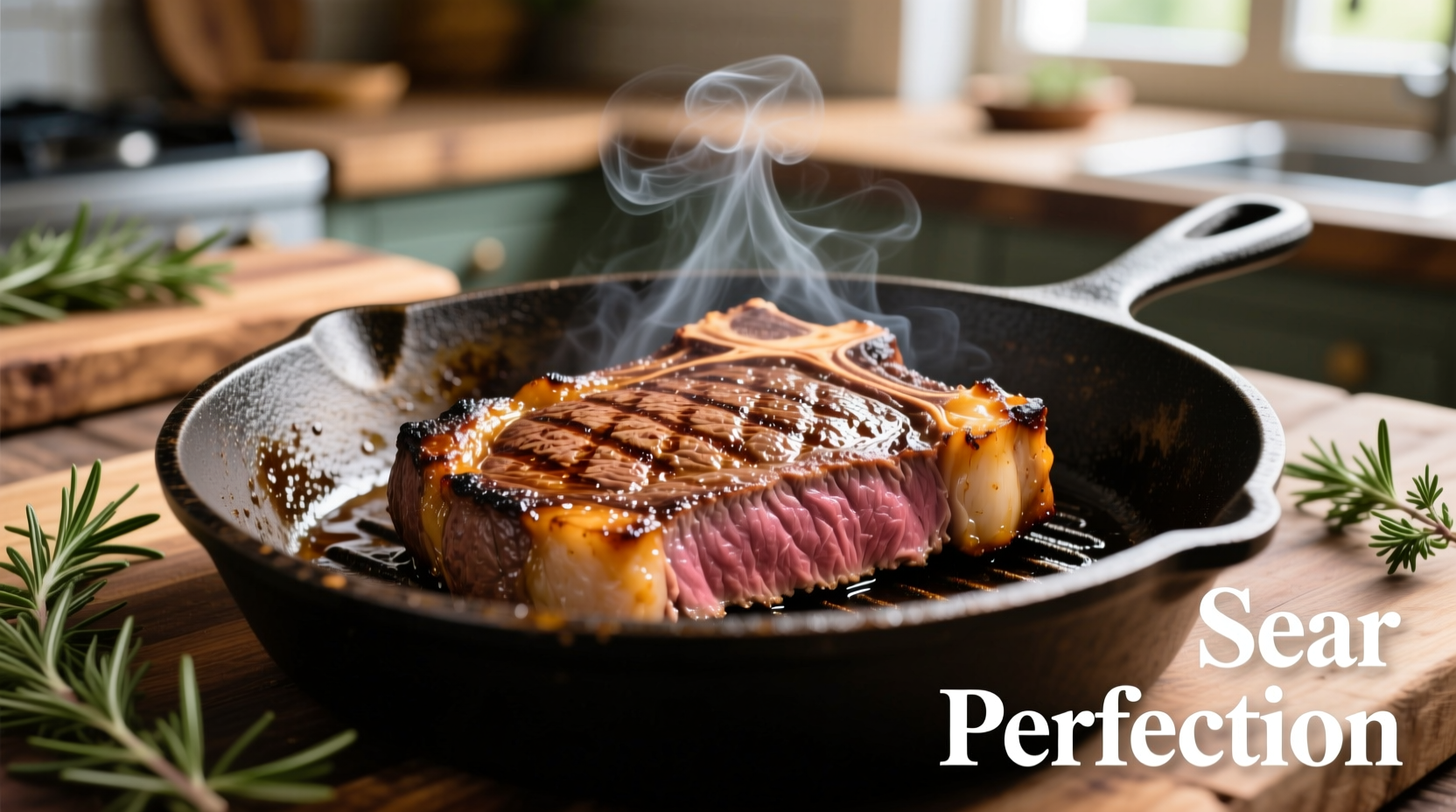The Ultimate Guide to Perfectly Cooked Top Sirloin Steak
Top sirloin steak offers an excellent balance of flavor, tenderness, and value, but cooking it properly requires understanding its unique characteristics. Unlike more marbled cuts like ribeye, top sirloin benefits from precise temperature control and proper resting to maximize its potential. This guide provides science-backed techniques used by professional chefs to transform this affordable cut into a restaurant-quality meal.
Why Top Sirloin Deserves Your Attention
Top sirloin comes from the upper portion of the sirloin, just above the hip bone. It's leaner than ribeye but more tender than regular sirloin, making it ideal for quick cooking methods. According to USDA data, top sirloin contains approximately 25% less fat than ribeye while maintaining comparable protein content, appealing to health-conscious meat lovers seeking robust beef flavor without excessive marbling.
Essential Tools for Success
- Heavy-bottomed cast iron or stainless steel skillet (avoid non-stick for proper searing)
- Instant-read thermometer (critical for accuracy)
- Meat tongs (not a fork that pierces the steak)
- Wire rack for resting
- Coarse kosher salt and freshly ground black pepper
Selecting Your Steak
Choose steaks at least 1½ inches thick for optimal cooking control. Look for bright red color with minimal browning and fine marbling throughout. The USDA Agricultural Research Service confirms that steaks with consistent marbling patterns cook more evenly than those with concentrated fat pockets. Avoid steaks with excessive liquid in the packaging, which indicates possible freezer burn or poor handling.
Preparation: The Critical First Steps
Remove your steak from refrigeration 60-90 minutes before cooking. This crucial step allows the meat to reach room temperature evenly, preventing the common mistake of a cold center with overcooked exterior. Pat the steak thoroughly dry with paper towels - moisture is the enemy of proper searing. Season generously with coarse salt (about 1 teaspoon per pound) and freshly ground black pepper on all sides.
| Doneness Level | Internal Temperature | Visual Characteristics | Resting Time |
|---|---|---|---|
| Rare | 120-125°F | Red center, cool | 8 minutes |
| Medium-Rare | 130-135°F | Warm red center | 10 minutes |
| Medium | 140-145°F | Pink center | 12 minutes |
| Medium-Well | 150-155°F | Slightly pink center | 15 minutes |
Searing Science: Creating the Perfect Crust
Preheat your skillet over medium-high heat for 5 minutes until smoking hot. Add 1-2 tablespoons of high-smoke point oil (avocado or grapeseed). Place the steak in the pan away from you to prevent oil splatter. For optimal Maillard reaction (the chemical process creating complex flavors), do not move the steak for 3-4 minutes. The American Meat Science Association confirms this reaction occurs most effectively between 285-325°F, requiring proper surface temperature. Flip once when a deep brown crust forms, then sear the other side for another 3-4 minutes.

Finishing to Perfection
For thicker cuts (over 1½ inches), transfer the skillet to a 400°F oven after searing both sides. Continue cooking until reaching 5°F below your target temperature (the temperature will rise during resting). Alternatively, finish on the grill over indirect heat. Never pierce the steak with a fork while cooking - this releases precious juices. Instead, use tongs to handle the meat gently.
The Non-Negotiable Resting Period
Transfer the steak to a wire rack (not a plate) and tent loosely with foil. Resting for 8-15 minutes (depending on thickness) allows juices to redistribute throughout the meat. Food science research from the Culinary Institute of America demonstrates that properly rested steaks retain up to 40% more moisture than those sliced immediately. Cutting too soon causes juices to pool on the plate rather than remain in the meat.
Serving Like a Pro
Slice against the grain at a 45-degree angle using a sharp knife. This shortens the muscle fibers, maximizing tenderness. For best results, cut into 1/4-inch thick slices. Pair with simple sides that complement rather than compete with the beef flavor - roasted vegetables, garlic mashed potatoes, or a fresh arugula salad work perfectly.
Avoid These Common Mistakes
- Skipping the dry step: Moisture prevents proper searing
- Overcrowding the pan: Lowers temperature and creates steam
- Flipping too often: Prevents proper crust formation
- Cutting too soon: Releases juices before they redistribute
- Relying on time alone: Always use a thermometer for accuracy
Temperature Troubleshooting Guide
If your steak reaches target temperature too quickly, reduce heat slightly and extend resting time. If cooking too slowly, increase heat incrementally. Remember that carryover cooking (temperature rise after removal from heat) adds 5-10°F depending on steak thickness. For precise results, remove steak 5°F below your desired final temperature.











 浙公网安备
33010002000092号
浙公网安备
33010002000092号 浙B2-20120091-4
浙B2-20120091-4